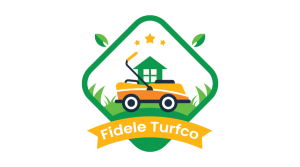Artificial turf installation has rapidly become a go-to solution for homeowners, businesses, and sports facilities looking for a lush, green space without the constant upkeep natural grass demands. Whether you’re aiming to enhance your backyard, upgrade a commercial property, or improve the playability of an athletic field, artificial turf offers year-round greenery, durability, and cost-efficiency.
In this article, we’ll walk through what artificial turf installation involves, the benefits it provides, and why it’s a smart investment for your outdoor (or even indoor) areas.
What is Artificial Turf?
Artificial turf is a surface made of synthetic fibers that mimic the appearance and feel of natural grass. Originally used in sports arenas, it’s now commonly installed in residential yards, playgrounds, rooftops, balconies, and pet areas. Modern turf products come in various textures, shades, and pile heights, offering a realistic and customized look.
Read also: influencersgonewild
Why Choose Artificial Turf?
There are several compelling reasons homeowners and property managers opt for artificial turf installation:
-
Low Maintenance: Say goodbye to mowing, watering, fertilizing, or dealing with brown patches. Artificial turf maintains its fresh look with minimal effort.
-
Cost Savings Over Time: While the upfront cost may seem higher than seeding or sodding natural grass, the long-term savings on water bills, lawn care tools, and landscaping services make it worthwhile.
-
Eco-Friendly: Artificial turf reduces water usage and eliminates the need for chemical fertilizers and pesticides, making it a sustainable landscaping solution.
-
Durability: Designed to withstand heavy foot traffic and harsh weather, synthetic grass can last 15–20 years or more with proper care.
-
Pet and Kid Friendly: It’s non-toxic, easy to clean, and provides a soft play surface, making it ideal for children and animals alike.
Read also: influencers gone wild
Artificial Turf Installation Process
The process of installing artificial turf involves several key steps to ensure the lawn is level, secure, and long-lasting. Here’s a general overview:
1. Planning and Measuring
Before installation begins, the area is measured and prepped. This helps determine how much turf material and base aggregate are needed. Proper planning also allows for optimal drainage design.
2. Excavation and Base Preparation
The top layer of soil is removed (usually 3–4 inches deep), and any existing grass or debris is cleared out. A weed barrier is often laid to prevent growth underneath. A base material—typically crushed rock or decomposed granite—is then added, compacted, and graded for proper water flow.
3. Laying the Turf
Once the base is compacted and level, the artificial turf is rolled out over the area. Seams are carefully joined using specialized tape and adhesive to ensure a smooth, seamless appearance.
4. Securing the Turf
The turf edges are secured with landscape staples or nails. This prevents the turf from shifting or curling at the sides over time.
5. Infill Application
To enhance the look and function of the turf, infill material—such as silica sand or rubber granules—is spread across the surface. Infill adds weight, improves durability, and helps blades stand upright.
6. Brushing and Finishing
A power broom or stiff-bristle rake is used to brush the blades upright and evenly distribute the infill. The lawn is inspected for any imperfections, and final touch-ups are done for a clean, finished look.
Read also: influencersgonewild
Key Areas Where Artificial Turf Shines
-
Backyards: Create a clean, mud-free outdoor space for hosting, relaxing, or playing.
-
Front Lawns: Enhance curb appeal with a year-round green, manicured look.
-
Pet Areas: Keep pets happy with a soft, durable surface that’s easy to clean and odor-resistant.
-
Playgrounds: Provide a safe, cushioned surface for children with minimal upkeep.
-
Rooftops and Balconies: Add life to urban areas with lush, functional green spaces.
Maintenance Tips for Long-Term Results
While artificial turf is low-maintenance, it’s not maintenance-free. To keep it looking fresh:
-
Remove debris like leaves or twigs regularly.
-
Rinse the turf occasionally to eliminate dust and pet odors.
-
Brush the blades to prevent matting in high-traffic areas.
-
Check for weeds along the edges and apply weed control as needed.
Final Thoughts
Artificial turf installation is a smart landscaping choice for those seeking beauty, functionality, and convenience. With a proper installation and minimal maintenance, synthetic grass delivers the lush, green appearance of natural lawns without the hassle.
Whether you’re tired of constant lawn chores, looking to cut down on water use, or simply want a consistently perfect outdoor surface, artificial turf can provide a solution that’s both practical and attractive. Investing in this modern alternative transforms your space while saving time, effort, and resources for years to come.
know More:
influencers gone wild
influencer gone wild


